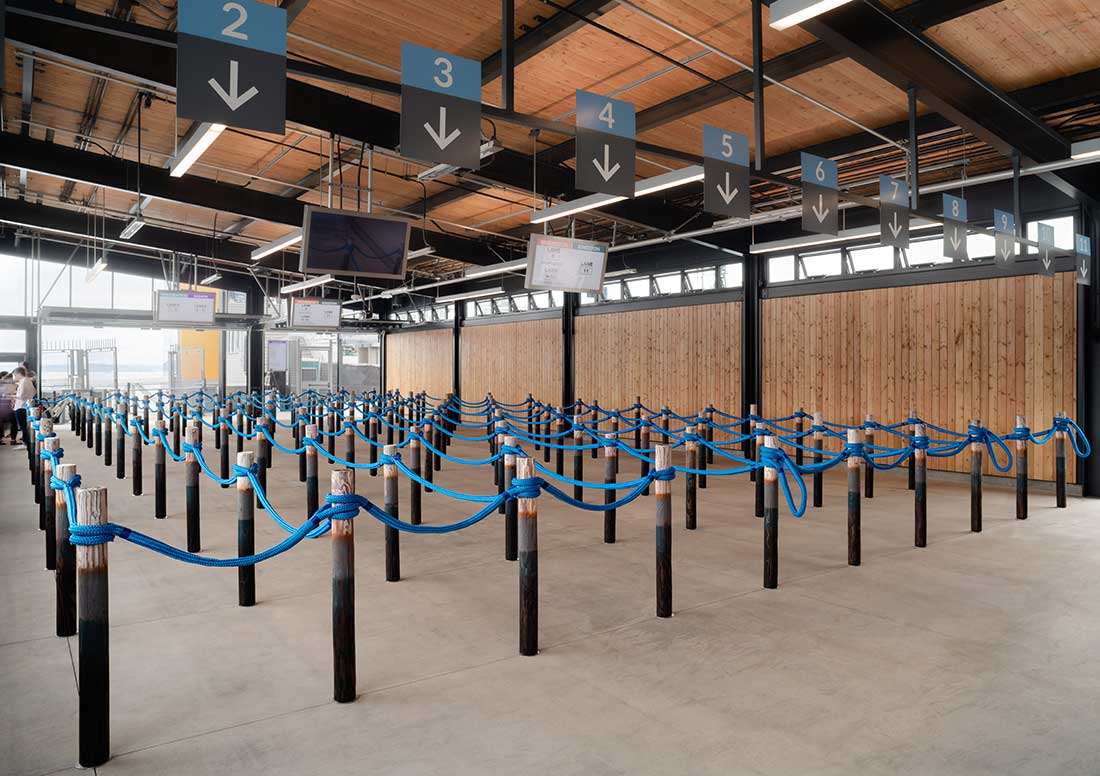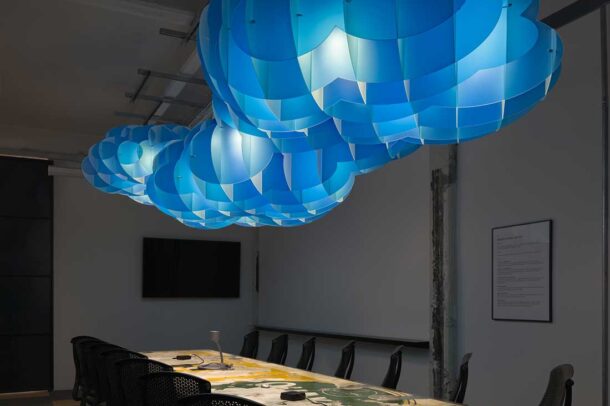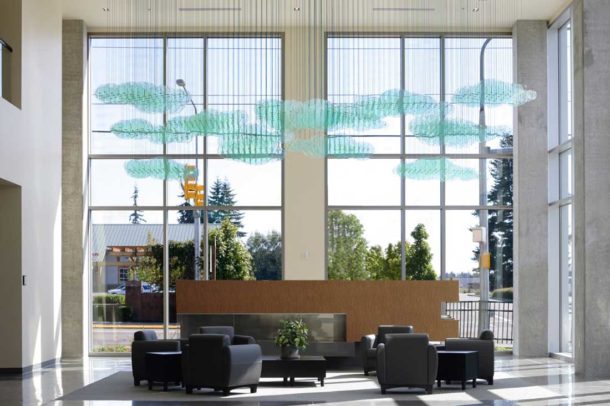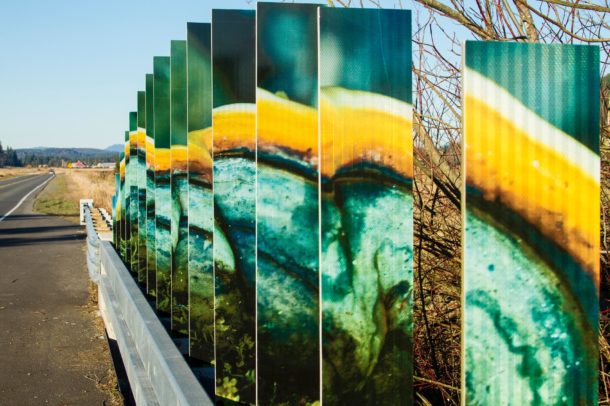Claim Stakes
Leo Berk
Colman Dock, Pier 50
Functional design elements echo the history of Seattle’s working waterfront and the origins of the wooden pilings that extended the city into the tidal flats.

At the spot where King County’s Water Taxi Terminal is now, early Seattle settler Henry Yesler once drove pilings into Puget Sound in order to support a wharf that extended from the city’s first industry—the sawmill. Hundreds of thousands of pilings soon followed, creating solid ground in the tidal flats. These wooden poles were the claim stakes for much of what is now downtown.
In his installation, Leo Saul Berk highlights the significance of these underappreciated and underfoot objects. A grid of redwood stanchions, arranged as a queuing system, are stained in graduated colors to reference tidal marks. Blue marine rope, curved to mimic the gentle waves of Puget Sound, connect the stanchions. Located at the Colman Dock’s passenger-only ferry terminal on Pier 50, the artwork provides a welcoming gateway, a visual indication of a uniquely Northwest journey, and a reminder about the history of Seattle’s working waterfront.Continue Reading ›
Claim Stakes is the result of a successful first-time collaboration between 4Culture and the King County Department of Transportation Marine Division, which manages Water Taxi service. It was created as part of a major overhaul of the facility, which dramatically updated the space while removing over 7,000 tons of creosote-treated timber piles, capping contaminated sediments, and minimizing impact to marine mammals. Each year, more than 1 million commuters, travelers, and tourists pass through the terminal on their way between downtown Seattle and West Seattle, Vashon, Bremerton, Kingston, and beginning in 2020, Southworth.
This is Berk’s second transit-based public art commission; his work can also be seen at the Sound Transit University Link Light Rail Station. In addition to many public art commissions, including a Bridge Manual with 4Culture, Berk has had solo exhibitions at the Frye Art Museum and the Seattle Art Museum.



